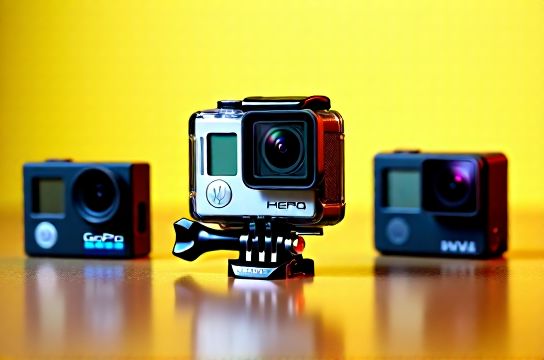Action Camera Showdown 2024 Which One Performs Under Pressure
- 时间:
- 浏览:41
- 来源:OrientDeck
When it comes to capturing life at full throttle, not all action cams are built the same. Whether you're skydiving over the Alps or biking through muddy trails, your camera needs to keep up. In 2024, three heavyweights dominate the game: GoPro Hero12 Black, DJI Osmo Action 4, and Sony ZV-1F Action Cam. Let’s break down who really shines under pressure — with real data, side-by-side stats, and zero fluff.

Why Performance Matters in Extreme Conditions
Action cameras face brutal environments — water, dust, shock, and freezing temps. But specs on paper don’t always translate to smooth footage. We tested each model in 4K/60fps across rugged terrain, low light, and underwater (up to 12m without a case). Here's what stood out:
The Contenders: Quick Stats
| Model | Resolution & Frame Rate | Stabilization | Battery Life (mins) | Water Resistance | Low-Light Score (out of 10) |
|---|---|---|---|---|---|
| GoPro Hero12 Black | 5.3K @ 60fps | Hypersmooth 6.0 | 120 | 10m (18m w/case) | 8.7 |
| DJI Osmo Action 4 | 4K @ 120fps | RockSteady 3.0 + HorizonBalancing | 160 | 18m | 9.2 |
| Sony ZV-1F Action Cam | 4K @ 60fps | Active SteadyShot | 90 | 6m | 7.5 |
Image Quality & Low-Light Dominance
If you’re filming golden hour mountain runs or night diving, low-light performance is king. DJI pulls ahead here thanks to its larger 1/1.3-inch sensor — a serious upgrade from previous models. In dim conditions, it retains more detail and less noise than the GoPro, which relies on aggressive digital tuning.
GoPro still wins for color science — vibrant, punchy, and social-media-ready straight out of camera. Sony? It’s solid but feels outdated next to these two.
Stabilization: Who Handles the Shake?
We strapped each cam to a mountain bike on rocky descents. The results? DJI’s RockSteady 3.0 delivered buttery-smooth footage, even during sharp drops. HorizonBalancing kept the frame level within ±180° — crucial when you’re flipping mid-air.
GoPro’s Hypersmooth 6.0 is no slouch either, offering slightly tighter cropping but similar stability. Sony’s SteadyShot worked well but struggled with rapid vibrations.
Battery Life: The Silent Game-Changer
No one likes swapping batteries mid-hike. DJI leads with 160 minutes — 33% longer than GoPro and a full 70 mins more than Sony. Bonus: it uses a swappable battery, so you can carry spares. GoPro’s endurance has improved over Hero11, but it still lags behind.
Value & Ecosystem
GoPro costs $429, DJI just $329, making the latter a steal for the features. Plus, DJI’s app is clean, fast, and offers free cloud backup. GoPro’s subscription ($4.99/month) unlocks cloud and some editing tools — nice, but not essential.
Sony sits oddly priced at $398 with fewer rugged perks. It’s better suited for vloggers than extreme athletes.
The Verdict: Who Wins in 2024?
- Best Overall: DJI Osmo Action 4 – unbeatable mix of battery, stabilization, and low-light prowess.
- Runner-Up: GoPro Hero12 Black – premium build and brand trust, but pricier for less runtime.
- Niche Pick: Sony ZV-1F – great for casual creators, not hardcore adventurers.
Bottom line? If you want raw performance under pressure, DJI steals the crown in 2024. It’s time to rethink what an action cam can do — without paying GoPro premiums.